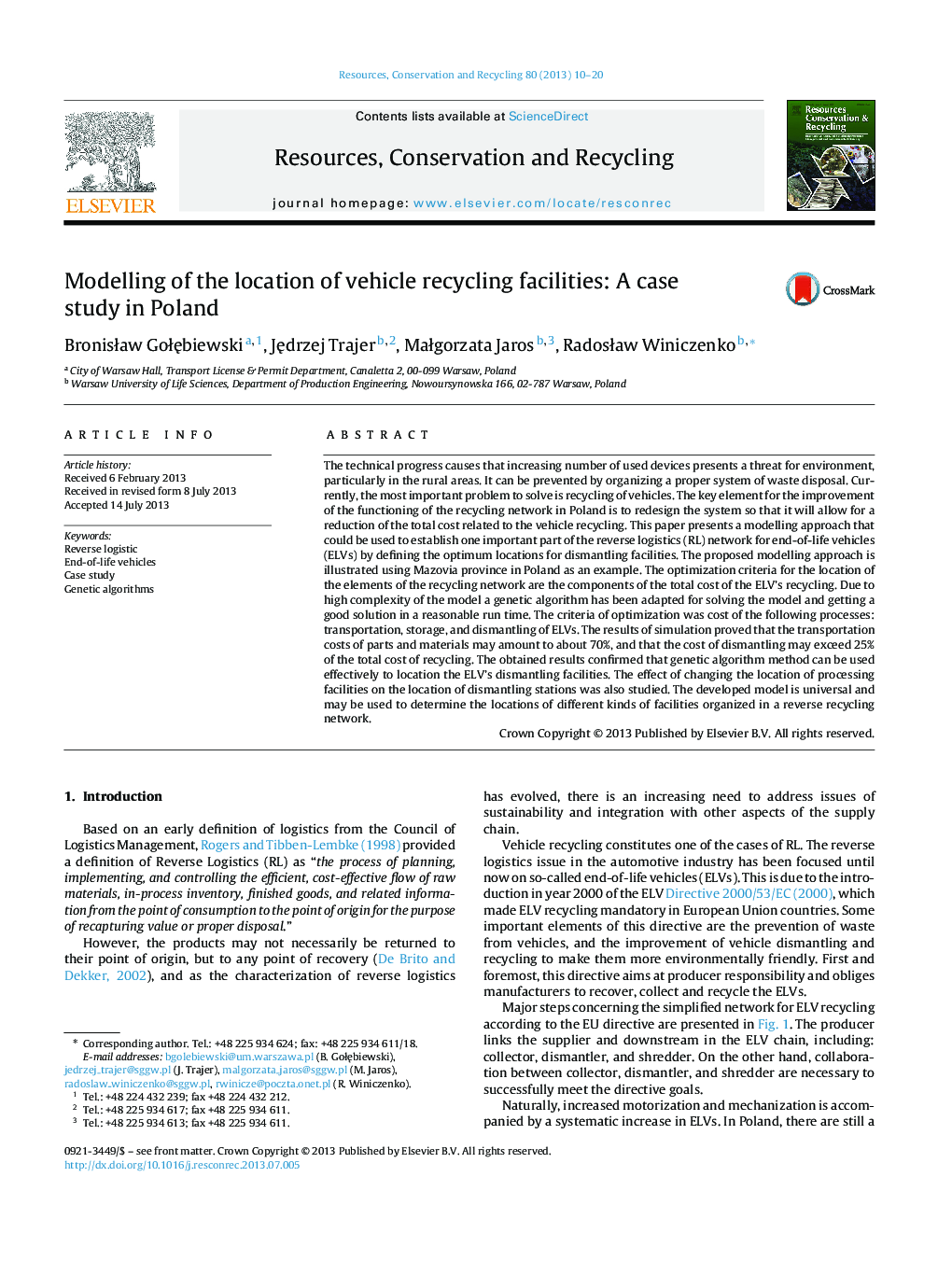| Article ID | Journal | Published Year | Pages | File Type |
|---|---|---|---|---|
| 1062987 | Resources, Conservation and Recycling | 2013 | 11 Pages |
•We modeled the problem to location end-of-life vehicle dismantling points.•To establish the optimum locations for dismantling facilities a genetic algorithm is used.•The modeling approach is illustrated in the Mazovia province in Poland.•The cost of dismantling may exceed 25% of the total of the recycling cost.
The technical progress causes that increasing number of used devices presents a threat for environment, particularly in the rural areas. It can be prevented by organizing a proper system of waste disposal. Currently, the most important problem to solve is recycling of vehicles. The key element for the improvement of the functioning of the recycling network in Poland is to redesign the system so that it will allow for a reduction of the total cost related to the vehicle recycling. This paper presents a modelling approach that could be used to establish one important part of the reverse logistics (RL) network for end-of-life vehicles (ELVs) by defining the optimum locations for dismantling facilities. The proposed modelling approach is illustrated using Mazovia province in Poland as an example. The optimization criteria for the location of the elements of the recycling network are the components of the total cost of the ELV's recycling. Due to high complexity of the model a genetic algorithm has been adapted for solving the model and getting a good solution in a reasonable run time. The criteria of optimization was cost of the following processes: transportation, storage, and dismantling of ELVs. The results of simulation proved that the transportation costs of parts and materials may amount to about 70%, and that the cost of dismantling may exceed 25% of the total cost of recycling. The obtained results confirmed that genetic algorithm method can be used effectively to location the ELV's dismantling facilities. The effect of changing the location of processing facilities on the location of dismantling stations was also studied. The developed model is universal and may be used to determine the locations of different kinds of facilities organized in a reverse recycling network.
